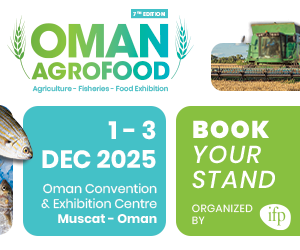Overview of Agricultural Protection Market in Middle East and Africa
The Middle East and Africa agricultural protection market is segmented by active ingredients, product types, origin, form, application, and crop types. Active ingredients include Bacillus Thuringiensis (BT), Azoxystrobin, Bifenthrin, Fludioxonil, Acephate, Boscalid, Bendiocarb, 1-Methylcyclopropene, Calcium Chloride, Daminozide, Benzyl Adenine, and others. Product types cover herbicides, insecticides, fungicides, plant growth regulators, acaricides, fumigants, nematicides, spread adhesives, and other protective products. Market segmentation also distinguishes synthetic and biopesticide origins, as well as liquid and dry forms, applied through foliar spray, seed treatment, soil treatment, post-harvest methods, chemigation, and more. Crop categories include cereals and grains, fruits and vegetables, oilseeds and pulses, turf and ornamentals, and other crops.
Market Growth and Dynamics
The demand for eco-friendly, organic, and biological agricultural protection products is steadily increasing. Consumers and farmers alike are gravitating towards solutions that minimize environmental impact while enhancing sustainable farming practices and crop health. This shift fuels market expansion, as crop protection products play a pivotal role in managing pests, diseases, and weeds. Herbicides, fungicides, and insecticides dominate the market, with key players such as Bayer, Syngenta, and Corteva maintaining strong market positions. Technological innovation and sustainable farming practices continue to drive growth.
Market Size and Forecast
The Middle East and Africa agricultural protection market was valued at USD 3.96 billion in 2023 and is projected to reach USD 5.49 billion by 2031, reflecting a compound annual growth rate (CAGR) of 4.20% during the forecast period (2024-2031). Data Bridge Market Research reports provide comprehensive insights, including market valuation, growth rates, segmentation, regional analysis, and major players.
Key Market Trends
Food security is emerging as a critical driver for the agricultural protection market, with increasing focus on stable and sustainable food supplies. Herbicides, insecticides, and fungicides are crucial in protecting crops from pests, diseases, and weeds, thereby boosting crop yields and ensuring food availability. Climate change, with its associated unpredictable weather patterns, exacerbates food insecurity by threatening yields and enabling pest proliferation. Agricultural protection products mitigate these risks, supporting reliable production across affected regions. Countries with significant agricultural sectors, including India, China, and Brazil, prioritize food security by promoting the use of protection products.
Market Definition and Scope
The agricultural protection market includes a diverse range of chemical, biological, and natural products that safeguard crops from pests, diseases, and weeds. Herbicides, insecticides, fungicides, and biopesticides form the core of this market, essential for enhancing agricultural productivity and global food security. The increasing global food demand, climate change, pest resistance, and declining arable land drive the need for such products. Regulatory frameworks, environmental concerns, and demand for organic and sustainable solutions influence market dynamics. Key industry players continuously innovate, developing new formulations that comply with international standards and address environmental concerns.
Market Drivers and Challenges
- Climate Change and Agricultural Practices: Rapid climate shifts and evolving farming methods propel the need for agricultural protection solutions. Changing weather patterns result in increased pest outbreaks and crop diseases, affecting global agricultural output. Crop protection products help farmers manage these risks and maintain productivity.
- Monoculture Vulnerabilities: Large-scale monoculture farming increases susceptibility to pests and diseases, necessitating robust protection measures to secure yields.
- Organic and Biological Demand: Rising consumer awareness about the environmental impact of synthetic pesticides accelerates demand for organic and biological alternatives. Governments promote organic farming through subsidies and incentives, encouraging manufacturers to expand their product lines.
- Technological Advancements: Precision agriculture and IoT technologies enhance crop health monitoring and targeted application of protection products, reducing waste and environmental impact.
Competitive Landscape The competitive environment includes comprehensive profiles of leading market players, detailing company financials, revenue, production capacities, strengths, weaknesses, product launches, and application dominance. The analysis highlights market share, new initiatives, research and development investments, and the geographic presence of major competitors.
Conclusion The Middle East and Africa agricultural protection market demonstrates steady growth, driven by technological innovations, rising demand for sustainable solutions, and increased focus on food security. With evolving agricultural practices and climate challenges, market players are expected to continue investing in eco-friendly products and expanding their presence across the region.











































































